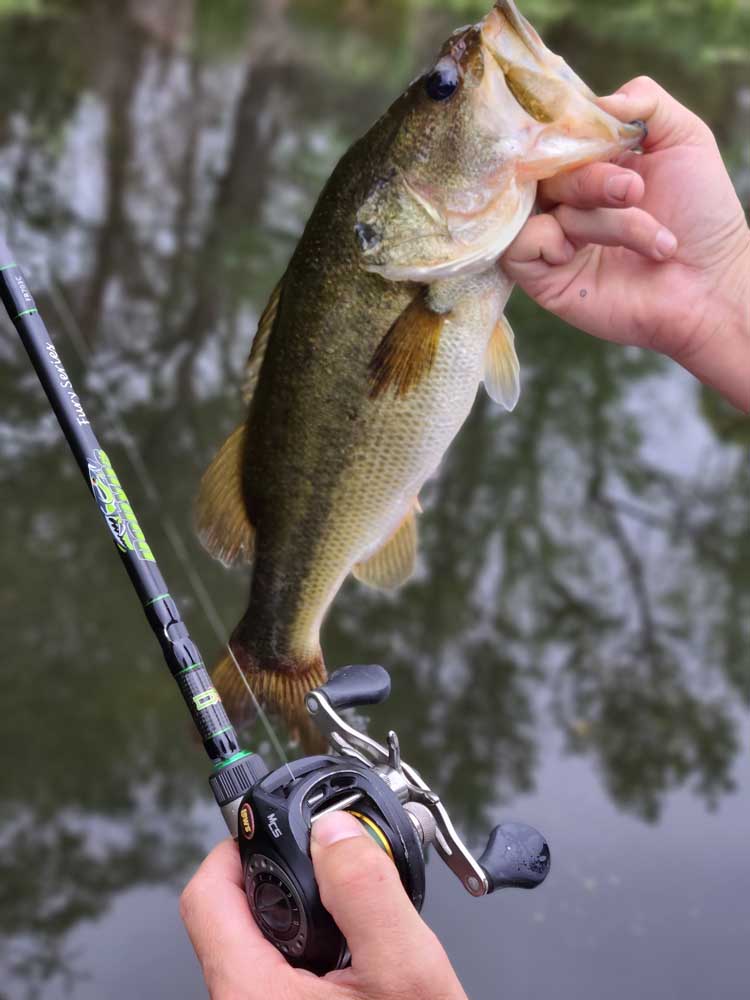Gearing Up: Matching the rod for technique makes for better fishing
Published 4:01 pm Thursday, June 9, 2022

- Having the best fishing rod possible for different lures and conditions can help fishermen catch because of better feel and better hook sets.
I have swapped out all my fishing rods this spring. Smartest thing I have done in a while.
I did not plan to do it because I did not think there was anything wrong the rods I was using. That was until I compared them side by side with the first new ones and learned there was a world of difference.
Trending
The simple version of the side-by-side test is that casting the old rod felt like swinging a broom handle, there was no flex or mechanical advantage when whipping back. And with the new rods, when a fish did show interest in a lure I could feel even the slightest tap and the hook set came with more power.
A little backstory. What I was using were quality 6-foot-6 rods, but they were general rods, medium and medium heavy. Admittedly they were not last year’s models, but they had served me well and caught a lot of fish.
When I bought them I could not see going over 6-6 for a couple of reasons. I did not own a boat so I was constantly transporting them in the back of a truck making the size more practical. Secondly, I was intimidated by the thought of a 7-foot rod. In my mind they would be unwieldy to fish with. Over time I got the opportunity to fish with a few and realized there were more advantages than disadvantages. However, that is not to say I am ready for an 8- or 9-footer yet.
This go-round I bought Dobyns rods. A big reason is because the company is based in Sulphur Springs and I subscribe to the buy local first when possible theory. I have also been learning from owner Gary Dobyns, who personally designs all of his rods, about the importance of more specific models over more general options.
Of course for most of us cost is a key factor, but like with most things in life cheapest is usually that. For a little bit more you can often get a lot more, and like most rod companies Dobyns offers rods up and down the price scale.
Buying a rod is a difficult proposition unless you get a chance to fish with one. Honestly it can be easier to buy a boat because at least you can test drive several for comparison. So it comes down to maybe getting a chance to test a friends before pulling out the debit card.
Trending
The other option is to compare the labels on each rod to see how they compare. The problem there is that there are not industry standards on what makes a rod a medium or medium/heavy, or what determines if the tip is an extra fast, fast or whatever action. Even where a rod should be balanced is subjective from one manufacturer to the next.
“Not really,” Dobyns said of any type of industry standard. “There are a bunch that have to say fast action to sell their rods, but they are really moderate action.”
He added even when a rod is more of a fast action, depending on how it is built it can be on the slow side of fast or it might be closer to extra fast.
Whether a rod is extra fast, fast or moderate is determined by the flexibility at the last 12 to 24 inches of the tip when pressure is applied. It is determined by the type of material used and the quality of those materials. While most of today’s rods blanks are made primarily of graphite, the quality and quantity are not always the same.
Dobyns demonstrated the difference between extra fast and fast action along with a general rod. The closer it bends to the tip, the faster the action.
And there are all sorts of stories written about which action is best for what kind of situation. Like with all things fishing, those suggestions can be taken with a grain of salt because what suits one fisherman may not another. An example, it is commonly said a fast action is not a good option for grass. Dobyns said he prefers it because when fishing something like a bladed swim jig, he can flip off grass easier working the bait.
To see the difference between rods today and those made from the not-too-distant past or older, fishermen need to leave the lake and go onshore to the golf course and see how much farther golfers can hit a ball with the modern design.
Since swapping, I have found I cast farther and more accurately, and I am feeling and setting the hook on more fish.
But there is a downside. With the new rods I learned some of my reels were not up to standard. Again with the golf analogy, I had a club that did more, but a ball that was holding it back. The only solution was new reels.




